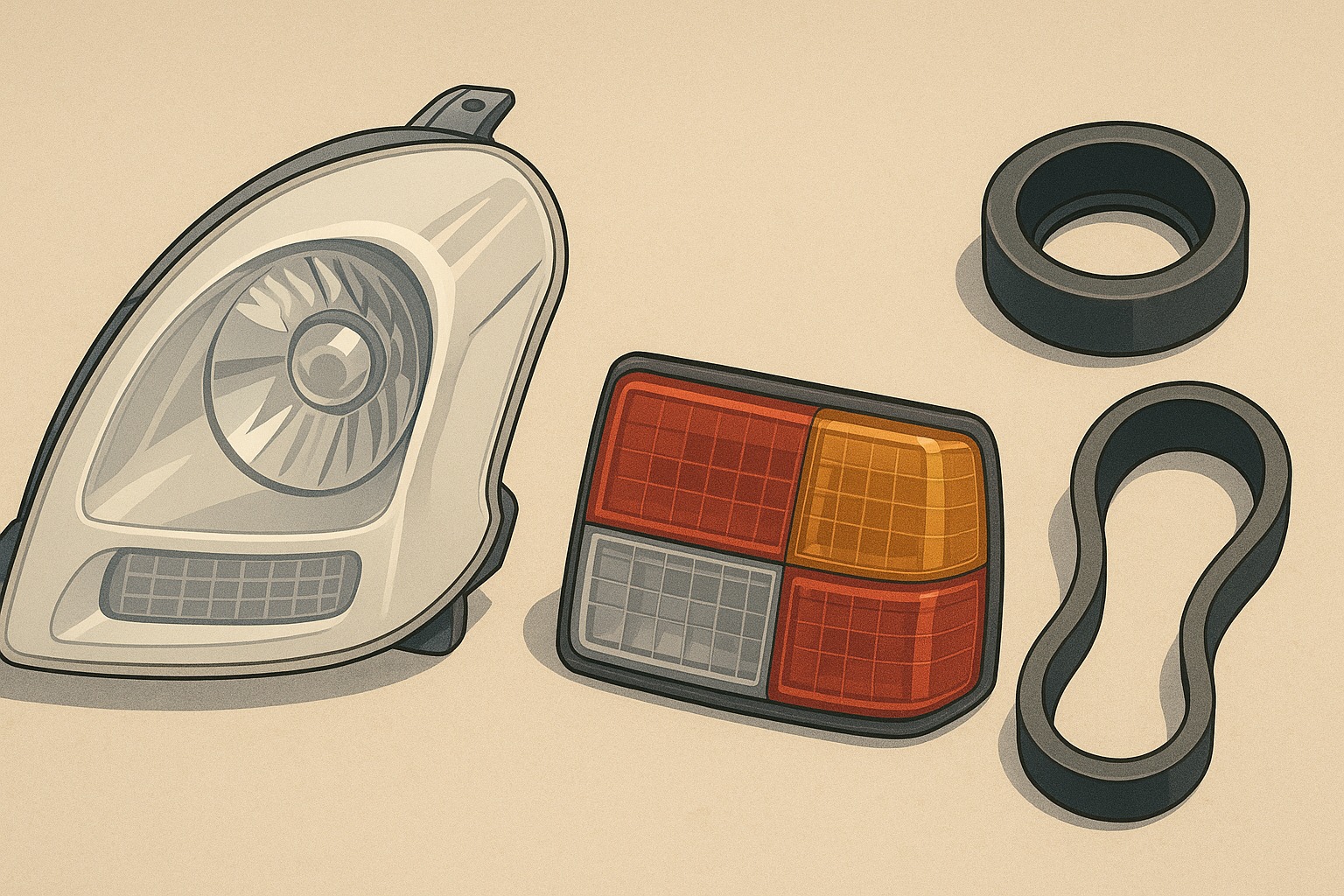Essential Parts to Keep for Maintaining Early 2000s Neo-Classic Vehicles
As cars and motorcycles from the early 2000s approach vintage status, owners often find that it’s not engine trouble that sends their beloved machines to the scrapyard—but the unavailability of essential components. This is especially true of unique lighting assemblies and rubber parts. Unlike mechanical parts, which are often shared across models or still serviceable with aftermarket options, these body-related components are often model-specific and irreplaceable. In this article, we will cover the kinds of parts you should consider stockpiling, the reasons why, and how a trusted specialist shop can support your efforts to keep your neo-classic vehicle on the road.
Why Parts Availability Is a Growing Problem
Since the early 2000s, vehicle components—particularly for exterior parts—have become increasingly specialized. Headlights, taillights, and bumper shapes are now often exclusive to a single model and year. Once discontinued, these parts rarely return to production. It’s not uncommon to hear stories of otherwise perfectly running vehicles being scrapped simply because a headlamp unit broke and couldn’t be sourced in time. With stricter inspection laws in many countries, including Japan, lighting defects can lead to inspection failure, effectively sidelining a car. In some cases, even official manufacturer museums resort to restoring vehicles using weathered or repaired rubber seals because no replacements exist.
The Key Categories of Parts You Should Keep
1. Unique Lighting Components (Headlamps, Taillamps)
Many early-2000s vehicles started using uniquely shaped resin-based light units that yellow, crack, or cloud over time. If your vehicle uses a proprietary design, it’s wise to secure at least one spare set while they are still available on the market. Applying a protective film to the current lenses can slow their deterioration. In vehicle inspections, cracked or clouded lenses can cause light leakage, resulting in a failed test.
2. Rubber Parts (Weatherstrips, Bushings, Seals)
Rubber components such as weatherstripping around doors and windows, suspension bushings, and engine mounts are particularly prone to wear and are often discontinued by OEMs. Even in professionally restored vehicles, aged rubber parts are common due to the lack of replacements. Enthusiast communities sometimes pool resources to commission reproduction runs of these parts—consider joining such efforts if available.
3. Electrical Components and ECUs
Modern vehicles rely heavily on electronic control. Sensors, ECUs, and wiring harnesses are often unique to a specific engine and trim level. Once an ECU fails, the vehicle may become undriveable. Storing a known-working spare ECU and critical sensors in anti-static bags with silica gel can save your vehicle in the long run.
4. Interior Trim and Plastic Panels
Dashboard materials, center consoles, and seat fabric from the early 2000s often featured plush textures and colorful designs that are no longer in production. Once cracked or torn, restoration may require fabricating replacements or reupholstering with near-matching materials.
5. Suspension and Braking Components
While brake pads and rotors may still be available, suspension bushings and dampers often go out of production. Finding compatible replacements or commissioning rebuilds from aftermarket specialists is sometimes the only option.
6. Key Cylinders and Locks
Ignition key cylinders are often unique and become hard to replace once production stops. A failed lock can render a vehicle inoperable. Some locksmiths can re-key new cylinders to match your existing keys—consider sourcing spares now.
Parts You Don’t Need to Stockpile (Yet)
- Batteries and Spark Plugs: Standardized and widely available.
- Major Engine Components: Often shared across models and supported by rebuild kits.
How to Source and Store Parts
Where to Buy:
- OEM dealers (while stock lasts)
- Auction sites and used parts markets
- Specialist shops and online communities
- Reproduction efforts and small-batch manufacturers
How to Store:
- Rubber and plastic parts: Cool, dark, dry locations. Store with silica gel packs.
- Electronic parts: Use anti-static bags and store in dry environments.
- Large items: Wrap in breathable materials; avoid stacking heavy objects on top.
Why You Need a Trusted Specialist
Even DIY-savvy owners benefit from having a go-to shop. These specialists can:
- Suggest compatible parts from other models
- Provide reproduction or refurbishing services
- Offer advice on preventive maintenance and inspections
They may also alert you when stock becomes available or reproduction projects launch.
Final Thoughts
Maintaining a neo-classic vehicle is not just about engine longevity—it’s about securing the rare, model-specific parts that are increasingly disappearing. Whether you’re stockpiling components yourself or relying on a trustworthy shop to help you plan ahead, now is the time to act. Availability will only decrease as time goes on. Stay proactive, stay informed, and enjoy your car or bike for many years to come.
Preparedness is preservation. Don’t wait until it’s too late.
